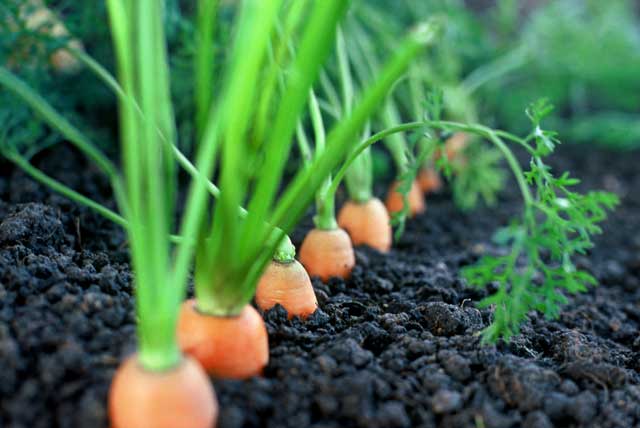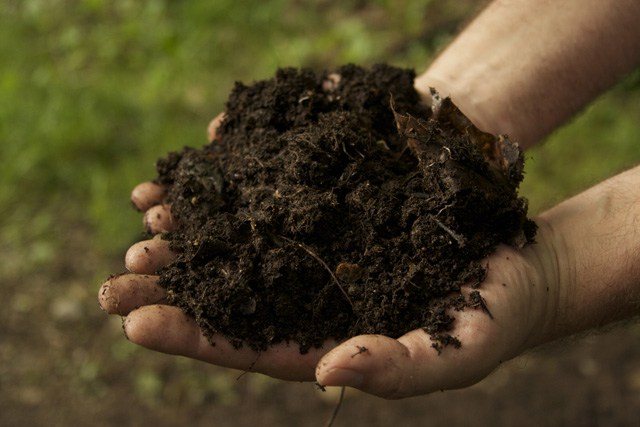
Bear with me here. Before you start to think you mistakenly bought a gardening manual, know this; you and your family and survival group’s destiny depends on your soil. If you want to not only survive but be healthy, free of chronic diseases, infections, and reproduce healthy robust children, then you had better pay attention to what I am about to say, it all starts with your dirt.
Your soil, if properly nourished and maintained, will prove to be the “goose that laid the golden egg”, and will feed you through its plants with an unending stream of essential amino acids, essential fatty acids, protein, healthy carbohydrates, vitamins, enzymes, minerals, trace elements, and phytonutrients. God made it possible, our job is to take all of his blessings and use them as they were intended for us, return to the garden.
First of all this entire process by necessity needs to be organic, meaning no artificial fertilizers, herbicides, pesticides, or fungicides of any type. No man- made chemicals are to be added to the soil at any time, recognizing that these are poisons and kill the extensive web of life contained in the soil. A soil devoid of life is worthless for nutritional purposes. In lifeless soils it is impossible to grow healthy plants.
SOIL LIFE
Healthy soil is alive and teeming with life of all kinds. Healthy soils contain large amounts of bacteria and fungi that help convert inorganic minerals (which plants cannot utilize) into organically chelated minerals that plants can readily uptake.
That is an important distinction to understand; plants and animals (including us humans) cannot absorb inorganic minerals, except for a very small amount that can be made by the intestinal bacteria.
We can, however, readily absorb organic materials, since they are usually wrapped in proteins that we can absorb; that process of enclosing the mineral in a protein or humic acid matrix is called chelation.
We absorb organic minerals and other organic compounds by eating plants that have absorbed those organic minerals and trace elements from the soil. If soils are deficient in any mineral or trace element, then it is impossible for the plants to obtain them for their needs, and in turn the animals that eat the plants, including us humans, will not be able to get the minerals and trace elements that we need to correctly construct our complex bodies.
ORGANIC MATTER AND SOIL PH
The bacteria and fungi in the soils live by virtue of the organic content of the soil; in other words they live by eating the decomposing organic matter in the soil such as decomposing plants and animals and other microorganisms. If the bacteria and fungi did not do this we would have mountains of dead and decaying plant materials.
You need to supply lots of organic material to help these microorganisms flourish. Other living organisms in the soil such as nematodes, protozoa, mites, springtails, and earthworms also need this organic material to flourish and add to the goodness of the soil.
Some excellent sources of organic matter can readily be made by composting.
As Preppers we should try never to waste any materials, including food that we do not consume, or parts of food discarded from food preparation. All the vegetable matter should be put in a compost bin or compost pile.
These do not have to be elaborate store-bought contraptions. You can easily make a compost bin as I have done with a handful of old wooden pallets and some wire.
Learn to improvise if you want to survive, learn to think outside of the box and you can come up with some wonderful, simple solutions for not only composting but many of the problems that will inevitably arise.
Another easy way to increase the organic content, especially the carbon content of soil, is by making Biochar.
Biochar is made by partially burning vegetable matter of any type then putting out the fire when it is only partially carbonized (looking like coal). This is an ancient method of fertilizing soil that was used by Native Americans to increase the fertility of their soil. It creates a finely grained, porous charcoal that is home to many soil microbes and increases both fertility and water retention capacities of soils. It is a wonderful way to convert garden and woodland waste into a valuable soil amendment.
Biochar is made when wood, bones, leaves, or manure (or any vegetable matter) is heated or burned at low temperatures in a kiln, this is done by limiting oxygen to the process and keeping the temperature below 700 F. The resulting half-burned charcoal-looking material is biochar, and is ready to be added to your soil.
Biochar like wood ash is alkaline and works best when used as a soil amendment on acidic soils. Mixing biochar with compost works best by helping to properly age the biochar and add the fertility boosting effects of compost.
As with any composting system, you cannot use meat, fats, or dairy products, which will ruin the compost and attract insects and mice and other vermin as well as stinking up your house. You can use newspaper, cardboard, fruit, vegetable matter, bread, teabags, and coffee grounds.
Soil can be improved by using a variety of readily available organic materials. As mentioned above, composting is a wonderful idea and will provide you with a steady supply of “ black gold” for your garden.
Other sources of organic materials are
- coffee grounds (I go to my local Starbucks and they are very nice about providing buckets of their coffee grounds);
- cover crops such as legumes, buckwheat, and cereal rye can be grown and then gently turned under and buried in the top layer of soil (it is a good policy never to leave your soil bare and open to the elements);
- dried manure (you cannot use fresh manure, it will burn your plants).
- Peat moss, wood chips, sawdust, grass clippings, leaf mold, and shredded and composted leaves are all wonderful sources of organic material for your garden; these all will lower your pH and make your garden more acidic.
- You can raise your pH by the addition of crushed rocks (rock dust), ashes from your fireplace or any wood burning, bone meal, and crushed oyster shells.
- If you live near the ocean, lakes or any body of water that can be used for fishing you can use dead fish to improve your garden soils. Salt water fish are better than fresh water but both will suffice. Bury any fish or fish parts that you are not eating into your garden; they are wonderful sources for many minerals and trace elements and have been used for centuries to enhance garden soils.
- Dried seaweed such as kelp is also an excellent source of minerals, nutrients, and phytonutrients such as growth hormones.
The ideal pH of your garden should be between 6.5 and 6.8, which is very mildly acidic. That pH range has been found to be optimal for plants to be able to uptake minerals and other charged particles from the soil. Lower or higher pH levels result in a binding of the nutrients and results in them being unavailable for uptake by your garden plants.
Growing plants in the wrong pH will result in disaster.
Simple soil pH kits are available in any garden center and I would buy several of them to have on hand. Most soils found east of the Mississippi river are slightly acidic in nature.
Soils that are too acidic can be sweetened by the addition of
- powdered limestone (lime), which is alkaline and will raise the pH into your target range of 6.5 to 6.8.
- you can also use wood ashes from your fireplace if no lime is available, which also contains potassium and many trace elements. Do not use more than 2 pounds of ashes per hundred square feet of garden (for those of you who are math-challenged, this means a ten foot by ten foot garden space, or twenty feet by five feet, etc.).
- Another formula to use to sweeten your soil is to add 4 pounds of lime per one hundred square feet for every one point of pH below 6.5.
- If you have alkaline soils (which are much less common) you can use sulphur on it to make it more acidic and you can also use pine needles or other acidic materials. e formula for the addition of sulphur to alkaline soils is 1 pound of sulphur per one hundred square feet per each point of pH above 7.5.
And this are just some of the ways of doing it. If you want to find out how to build a healthy soil using:
- EARTHWORMS
- HUMUS
- MYCORRHIZAL FUNGI
- MINERALS AND TRACE ELEMENTS
Get The Doomsday Book of Medicine today. Just don’t be fooled by the title.
The word doomsday only refers to its size.
Over 800 pages full of practical advice just like this one.















